Сб с 10 до 16
Quantification Addendum: International Medical Guide for ships (3rd edition)
Издание на английском языке
The International Medical Guide for Ships is an important resource for ensuring the health and safety of seafarers. It provides recommendations on medical care on board ships, including information on necessary medicines, medical equipment, and first aid procedures. The publication is updated to reflect the latest standards of the World Health Organization (WHO) and the International Labour Organization (ILO), which makes it possible to provide medical care comparable to that available on land. The guidance helps crews respond effectively to medical emergencies and supports the health of seafarers in conditions of isolation and long voyages.
Contents
Preface
Acknowledgements
Introduction
How to use this guide
1 First aid
First aid on board
A basic life support sequence
Choking
Bleeding
2 Shock
3 Pain management
4 Head injuries
Anatomical note
General note on head injuries
Skull fractures
Traumatic brain injury (brain damage)
Post-concussion syndrome
5 Eye injuries and diseases
Eye injuries
Red flags
A blow on or near the eye
Corneal abrasion
Loose foreign bodies.
Foreign bodies, embedded in the eye
Wounds of the eyelids and eyeball
Chemical burns
Arc eyes ("welder's flash")
Noninfectious eye diseases
Subconjunctival haemorrhage
Cataract
Glaucoma
Infectious eye diseases
Blepharitis
Conjunctivitis
Keratitis
Hordeolum
Sudden painless loss of vision
6 Bone, joint, and muscle injuries
General treatment of injuries
Specific injuries
Strains and sprains
Compound fractures
Skull fractures
Nose, jaw, and face fractures
Neck (cervical spine) injuries
Collar bone (clavicle) injury
Shoulder injury
Injury to the upper arm (humerus) and elbow
Wrist and forearm fractures
Hand and finger injuries
Rib fractures
Fractures of the pelvis, hip, and femur
Knee injuries.
Shin (tibia and fibula) fractures
Ankle injuries.
Fractures, of the foot and toes
Splints and slings
7 Abdominal and chest injuries
Abdominal injuries
Blunt abdominal injuries
Penetrating abdominal injuries.
Chest injuries
Simple rib fracture
Flail chest
Pneumothorax
Spontaneous, pneumothorax
Tension pneumothorax
Penetrating chest wounds
8 Wounds
Wound healing
Red flag wounds
How to close a wound
Using adhesive skin closures.
Using skin adhesive (liquid stitches)
Suturing a wound
Local anaesthesia
Special wounds
Lips
Tongue
Ears and nose
Eyelids
Puncture wounds of the soles of the feet
Wound infection
Dressing wounds that cannot be closed
9 Burns, chemical splashes, smoke inhalation, and electrocution
Clothing on fire
Heat burns and scalds
Infection of a burn
Respiratory tract burns
Electrical burns and electrocution
Chemical splashes
Flash burns (arc eye)
Smoke inhalation
10 Heat stroke and other heat disorders
Heat stroke
To prevent heat stroke
Stokers cramps
Heat exhaustion (or “heat collapse")
11 Poisoning
Poisoning with ingested drugs and chemicals
Red flags.
Common poisoning agents
Paracetamol (acetaminophen)
Acetylsalicylic acid (Aspirin)
Methanol and ethylene glycol
Organophosphate and carbamate Insecticides.
Anticoagulants (warfarin, rat poison)
Petroleum products
Caustics
Disinfectants, and bleach
Dangerous, prescription drugs.
Poisoning from exposure common to gases or vapours Carbon monoxide Cyanide
Irritant gases. - phosgene, chlorine, ammonia
Carbon dioxide
Flammable liquid vapours
Freons
Hydrogen sulphide (“Rotten egg gas" "Sewer gas")
Bites and stings
Rat bites
Snake bites.
Jellyfish stings
Venomous, fish
Sea urchins
Scorpions and spiders
12 Examination of the patient
Introduction
Consent
Privacy and confidentiality
The physical examination
13 Paralysis, strange behaviour, unconsciousness
Stroke
Transient ischaemic attack (TIA)
Headache
Red flogs
Seizures and epilepsy
Types of epileptic seizure
Red flogs
Drugs that con precipitate seizures
Loss of consciousness
Sudden loss of consciousness (syncope)
Finding on unconscious person
Diabetes mellitus ond como
Diabetic ketoocidosis
Hypoglycoemio
Bell’s palsy
Mental illness
Psychosis
Forms of psychosis
Depression
Violent or threotening behoviour
Suicide
After on unsuccessful suicide ottempt
Post-troumotic stress disorder
14 Chest pain and other disorders of the heart and circulation
Angina pectoris
Completions of myocordinl inforction
Polpitotions
Blocked orteries in the legs
Deep vein thrombosis
15 Respiratory diseases
Bronchitis
Bronchitis due to infection
Bronchitis due to cigorette smoking
Bronchiectasis
Common cold
Pleurisy
Pneumothorox
Pneumonia
Lobor pneumonic
Empyemo
Aspirotion pneumonio ond lung obscess
Sinusitis
Hay fever
Asthma
16 Gastrointestinal and liver diseases
Abdominal pain - general points
Red fl ogs in obdominol poin
Severe abdominal pain
Appendicitis
Pancreatitis
Bowel obstruction
Diarrhoea
Foodborne illness
Dysentery
Travellers diarrhoea
Food poisoning from marine toxins
Inflammatory bowel disease (colitis)
Ulcerative colitis
Crohn's disease
Antibiotic-associated colitis
Indigestion and pain related to meals
Gastro-oesophageal reflux disease
Peptic ulcer
Red flags
Heavy bleeding from the gastrointestinal tract (gastrointestinal haemor r hage)
Heavy upper gastrointestinal bleeding
Heavy lower gastrointestinal bleeding
Anal fissure
Haemorrhoids (piles)
Analpruritis (anal itch)
Hernia
Inguinal (groin) hernia
Liver and biliary disease
Jaundice
Liver failure
Alcoholic liver disease
Gallstones
17 Kidney and other urinary disorders
Disorders of the kidney
Acute renal (kidney) failure
Chronic renal failure (Brights disease)
Kidney stones (renal colic)
Other urinary disorders
Red urine
Urinary tract infection
Urinary tract infection in women
Urinary tract infection in men
Prostatitis
Chronic pelvic pain in men
Benign prostatic hyperplasia (BPH, enlarged prostate)
Acute urinary retention
18 Pregnancy and childbirth
Pregnancy
Drugs in pregnancy
Vaginal bleeding during pregnancy or suspected pregnancy
Ectopic pregnancy
Miscarriage
Salpingitis (inflammation of a fallopian tube)
Pruritus vulvae (external genital itching)
Childbirth
Preparing for the birth
Managing the early stages of childbirth
Managing the birth
Caring for the baby after delivery
Caring for the mother after delivery
Post-partum haemorrhage
Other possible problems after childbirth
19 Sexually transmitted infections
Urethritis
Urethritis in women
Gonococcal proctitis
Gonococcal pharyngitis
Genital ulcers
Acute pain in the scrotum
Epididymitis
Testicular torsion
Trauma to the scrotum
Testicular inflammation (orchitis)
Balanitis
Lymph node swelling in the groin
Vaginal discharge
Bacterial vaginosis
Vaginal candidiasis
Trichomoniasis
Pelvic inflammatory disease
Ano-genital warts
Pubic lice
Acquired immunodeficiency syndrome (AIDS)
Later stages of HIV and AIDS Treatment of HIV infection
Post-exposure prophylaxis
20 Skin diseases
Questions to ask a patient
Barber’s rash
Folliculitis
Pseudofolliculitis (also called “razor bumps")
Tinea barbae
Acne
Chaps
Dermatitis
Irritant contact dermatitis
Eczema (atopic dermatitis)
Allergic contact dermatitis
Fungal skin infections
Tinea pedis (athletes foot)
Tinea corporis (ringworm)
Tinea cruris (Jock itch, Dhobie itch)
Bacterial skin infections
Impetigo
Carbuncles and furuncles (furunculosis)
Skin abscess
Pediculosis (lice infestation)
Scabies
Shingles (herpes zoster and varicella zoster)
Urticaria (hives)
Cellulitis and erysipelas
Cellulitis arising from wounds exposed to estuary or seawater
21 Bone, joint, and muscle disorders
Joint inflammation
Gout
Septic arthritis
Rheumatoid arthritis
Osteoarthritis
Problems in specific joints
The knee
The shoulder
The back
Red flags
The neck
Red flags
22 Tobacco, alcohol, and drug use
Four main questions to consider
Alcohol intoxication
Alcohol withdrawl
Minor withdrawal ("the shakes")
Major withdrawal (delirium tremens, DTs)
Cannabis intoxication
Opioids, opiates, and related drugs
Heroin intoxication
Heroin overdose
Infection in heroin users
Heroin withdrawal
Other opioids
Cocaine (“coke" “snow", etc.)
Amphetamines
Hallucinogen intoxication
Lysergic and diethylamide (LSD)
Phencyclidine ("PCP“ “angel dust")
Plant hallucinogens
“Flashbacks"
Kava kava
23 Infectious diseases
Infectious agents
How infections spread
Common terms used in connection with infections
Onset
Fever
Rash
Management of infectious diseases - general principles
Isolation
Needle-stick injuries
Treating infectious diseases
Food
Some common or important infections that could occur on board
Anthrax
Chickenpox and shingles (varicella-zoster virus)
Cholera
Dengue
Diphtheria
Ear infections
Hand infections in seafarers and fishers
Infectious mononucleosis (glandular fever)
Influenza
Malaria
Meningitis and meningococcal infection
Mumps
Plague
Rabies
Rubella (German measles)
SARS (severe acute respiratory syndrome)
Sore throat
Red flags
Tetanus (lockjaw)
Tuberculosis
Typhoid and paratyphoid fever
Viral hepatitis (hepatitis A, B, and C)
Whooping cough (pertussis)
Worms
Yellow fever
24 Dental problems
Some common dental problems
Tooth decay (caries)
Pulpitis andperi-apicai abscess
Periodontal disease (gum inflammation)
Pericoronitis
Red flags
Lost fillings and broken teeth
A bleeding socket
Lost teeth
25 External assistance
Medical advice
Evacuation by helicopter
Ship-to-ship transfer of doctor or patient
Referral information to accompany evacuated patients
26 Nursing care and medical procedures
Nursing care
Preparing sick-quarters.
First steps on a patients arrival
Basic principles, of nursing care
Caring for the bed-bound patient
Monitoring the vital signs
Bodily functions
Examining faeces, urine, sputum, and vomited matter
Mentally disturbed patients
The unconscious patient
Medical procedures
Applying cold
Applying heat
Catheterizing the urinary bladder
Surgical dressings
Administering medicines - basic principles
Routes of administration
Injections
Eye medication
Ear medication
27 Death at sea
Signs of death
Examining a dead body
Disposal of the body
Burial at sea
28 Medical care for survivors at sea
Abandoning ship
Surviving in a survival craft
Near-drowning
Generalized hypothermia due to cold water immersion
Cold exposure injuries
Frostnip
Frostbite
Immersion foot (trench foot)
Other medical problems aboard survival craft
Seasickness
Sunburn
Dehydration and malnutrition
Heat exposure
Contamination with oil
Food and water for rescued survivors
Medical resources on a lifeboat
29 Environmental control and hygiene
Ventilation
Lighting
Food hygiene
Food-handlers
Food service facilities
Food storage
The galley (ship's kitchen)
Toilet and washing facilities
Liquid transport and potable water
Potable water sources.
Potable water transport system
Potable water storage
Taking water on board
Disinfection of potable water
Disposal of liquid and solid wastes
Combating disease vectors
Rodents
Insects
Flies
Mosquitoes
Cockroaches
Bedbugs
Sanitary inspection
30 Preventing disease and promoting health in seafarers
Preventing communicable diseases
Isolation
Immunization
Hepatitis. A and hepatitis B
Other infections
Preventing other diseases
Stopping smoking
A balanced diet
Personal hygiene
Sleep
Preventing illness from exposure to extremes of temperature
Sunburn and skin runner
Lifting heavy weights
Foot injuries.
Lank of exercise and boredom
Preventing ill-health from seafaring work
General principles of promoting safety on board ship
The Health and Safety Committee
Briefing for new tasks
Work place assessment
Provision of good medical care
Seafarers' lifestyles
31 Anatomy and physiology
Cells
Tissues
Organs
Note on anatomical terms and descriptions
The skeletal system
The muscular system
The circulatory system
The respiratory system
The digestive system
The urinary system
The nervous system
The endocrine system
The blood
Blood and anaemia
The immune system
Allergy
32 International Health Regulations
International Health Regulations (2005)
Part I - Definitions, purpose and scope, principles and responsible authorities.
Part IV - Points of entry
Part V- Public health measures.
Part VI - Health documents
Part VII - Charges
Annex 1 - B. Core capacity requirements for designated airports, ports
and ground crossings
Annex 2 - Descision instrument for the assessment and notification of events that
may constitute a public health emergency of international concern
Annex 3 - Model ship sanitation control exemption certificate/ship
sanitation control certificate
Annex 4 - Technical requirements pertaining to conveyances and conveyance operators
Annex 5 - Specific measures for vector-borne diseases
Annex 6 - Vaccination, prophylaxis and related certificates
Annex 7 - Requirements concerning vaccination or prophylaxis for specific diseases
Annex 8 - Model of maritime declaration of health
33 The ship's medicine chest
Introduction
Basic rules for managing the medicine chest
Anaphylaxis
Drug rash and other drug-related skin problems
Controlled drugs.
Ships carrying dangerous goods
Specific categories of medicines
Fluids for intravenous, infusion
List of recommended medicines and equipment
Annex A: Forms for case reporting, referral, and evacuation
Ship master's, report form
Ships identity and navigational status form
Patient health status, form
Primary physician's, report form
Index
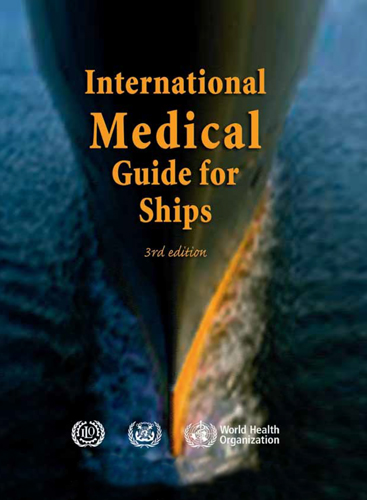
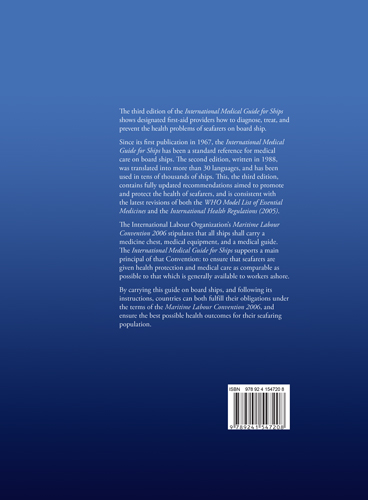



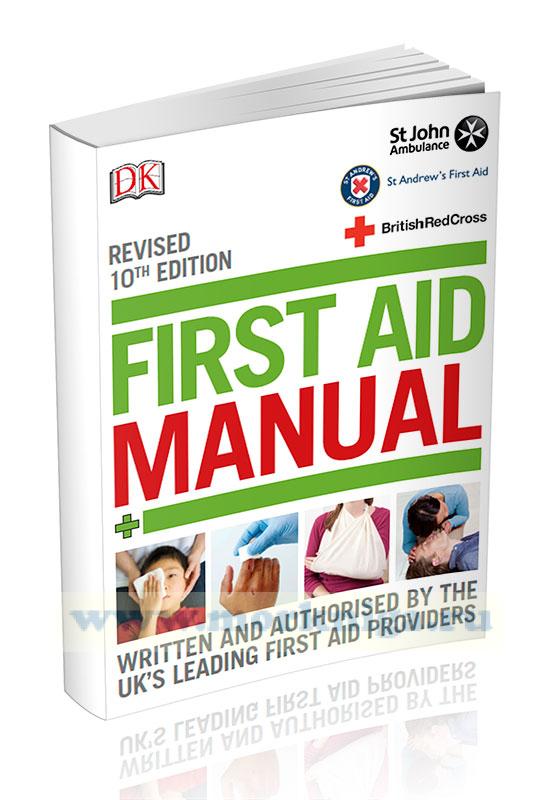 First aid manual/Пособие по первой помощи
First aid manual/Пособие по первой помощи 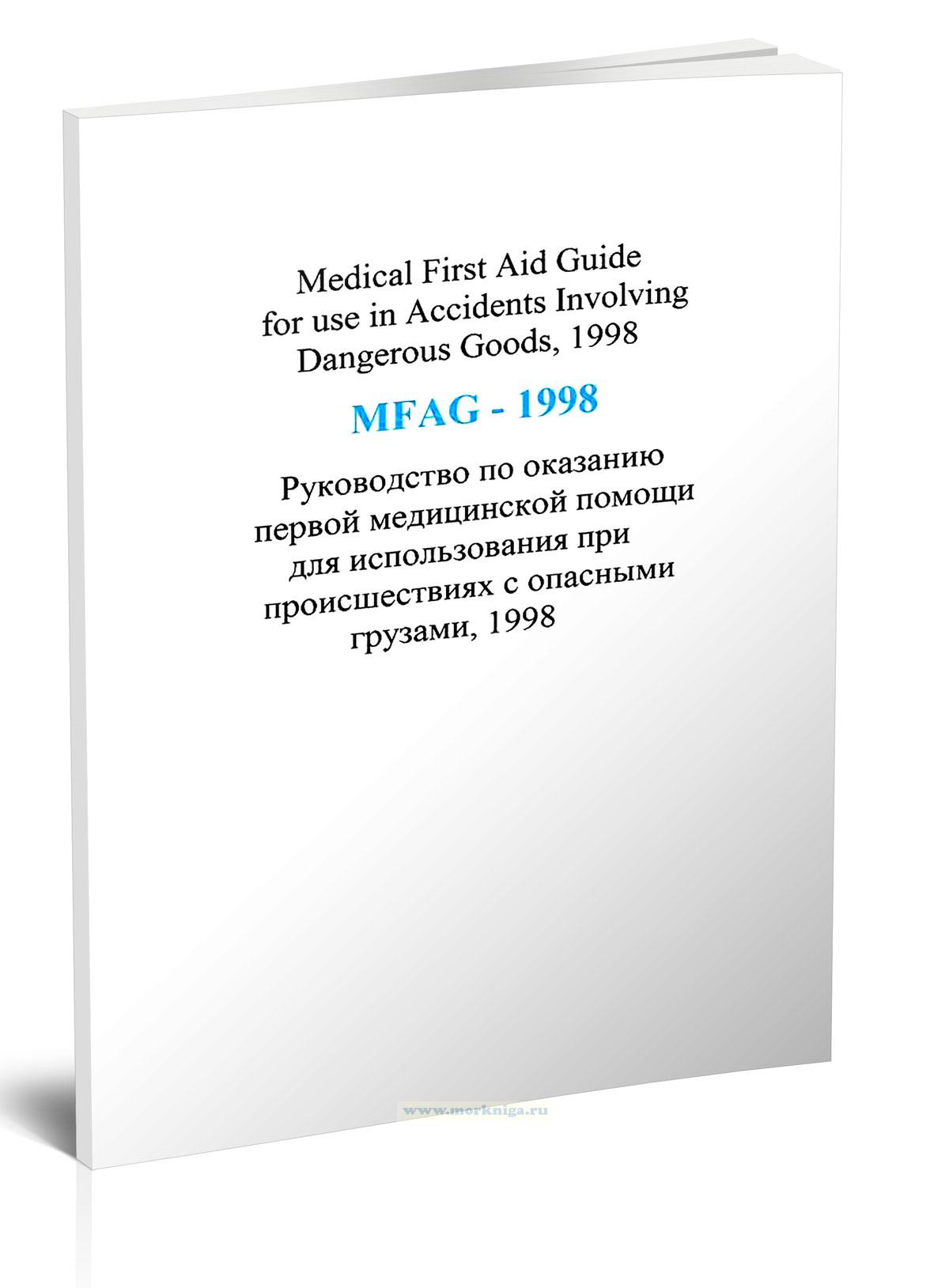 Medical First Aid Guide For Use In Accidents Involving Dangerous Goods (MFAG-1998) - Руководство по оказанию первой медицинской помощи для использования при происшествиях с
Medical First Aid Guide For Use In Accidents Involving Dangerous Goods (MFAG-1998) - Руководство по оказанию первой медицинской помощи для использования при происшествиях с 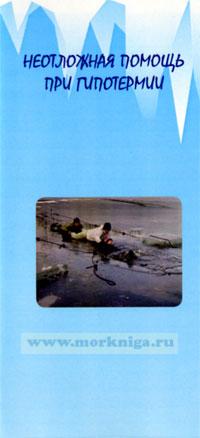 Буклет "Неотложная помощь при гипотермии"
Буклет "Неотложная помощь при гипотермии"